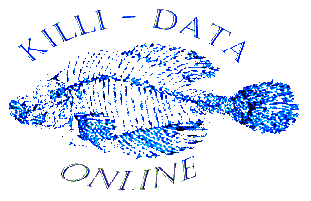RIVULUS 1992
Dr Jean H. Huber
Société Française d'Ichtyologie
M.N.H.N., 43 rue Cuvier, Laboratoire d'ichtyologie, 75231 PARIS cedex 05, FRANCE (today inactive)
Paris, December, 24. 1992
A NEW BOOK in English:
"Review of Rivulus, Ecobiogeography, relationships", the first comprehensive analysis of this neotropical Cyprinodont (or Killies) genus.
It encompasses 110 taxa (including synonyms) with 7 descriptions of new species and several redescriptions:
- 586 black and white pages of scientific data and evaluations, including all what is known from the aquarium; most of these being reported for the first time, with 60 photos, 158 drawings, 13 tables and 18 maps.
- 40 color pages with 145 color prints of 65 species and their variations according to population; also, with examples of the fishes' preferred biotopes.
The Rivulus genus is well known to both aquarists and scientists since:
- it is the most widespread neotropical Cyprinodont genus, from Florida to Argentina, i.e. about 7000 km (or 4400 miles).
- the males of most species exhibit striking colors, when best kept and fed, just about like the famous Aphyosemion, their counterparts in Africa.
- these fishes show a strange jumping and aestivating behavior, stranding their eggs in nature and placing them on top of the mop in aquarium.
- the genus comprises some unique Killies as a selfing hermaphrodite Riv. ocellatus / marmoratus {today in Kryptolebias}, a quarrelsome annual Riv. stellifer {today in Llanolebias}, a Nannostomus-shaped nocturnal jewel Riv. xiphidius, an Anableps-like non-swimmer Riv. atratus, without mentioning the dozens of species, most of them easy to breed, which rival each other by colors and specificities.
For example, did you know that Riv. santensis was reported with a 1m down jump (without damage), that Riv. hartii was found in an artificially dug pit, filled by rain water some 200m high up a hill from a dried-up brook, that more than half of the female-looking hermaphrodites of Riv. marmoratus become secondary males when old, that the famous so-called supracaudal ocellus is neither 100% a female character, nor 100% a genus character, that some species like letting the current of the big rivers move them gently, whereas others, such as Riv. geayi, prefers no water at all, but beds of wet leaves, that a lot of species feed on terrestrial ants and love black waters, that Riv. marmoratus typical habitat is crab holes, etc, etc.
For each species, are reported its aquarium requirements, its habitat, the collecting localities and all necessary scientific information.
This book is also unique, because the author has agreed not to get a single franc (or penny!) from its sales; but if eventual profits are derived from them, they will be given to S.F.I., a non-profit organization who is funding European ichthyological research, and to P.A.H.O., the South American arm of U.N.I.C.E.F., for child-health. Besides, it has been printed in limited quantities, due to budget constraints. So please consider the above when ordering and/or reporting on it and/or enquiring about distribution rights in a given country.
PRICE (initial): 450 French Francs (including postage) per unit. (= 70 €)
AVAILABILITY: November 2019, definitely sold out ; no book available from author/publisher, only available (possibly) as a second-hand purchase, on private platforms.


